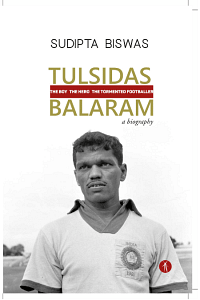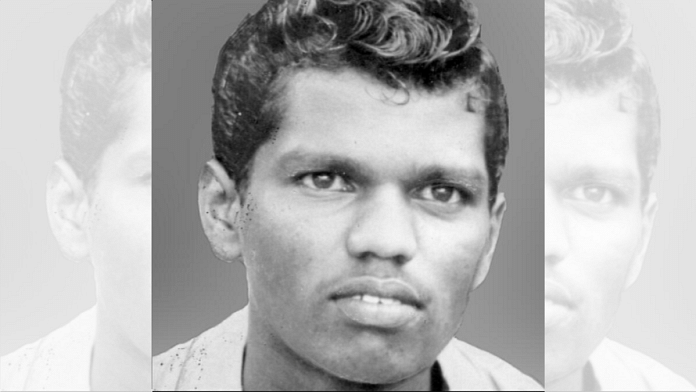For a footballer of Balaram’s credentials, who had represented India with distinction, playing in two Olympics and scoring against mighty Hungary, winning the Asian Games gold, guiding two states to the national championship crown, and inspiring East Bengal to retain their charm as India’s national club, it seemed odd that he had not been bestowed with the Padma Shri award.
Since the Padma Shri is the highest award an Indian player has won to date, footballers, cutting across the generations, have treated it as their prix ultime. But Balaram could never
correct that anomaly.
Compared to many of his contemporaries as well as the ones that have followed, Balaram’s stats may not look flattering. He played 36 matches and scored 14 goals for India and 117 goals in his club career, spanning over eight years (1956–1963). But he is definitely more than the sum total of the goals he scored for India and East Bengal. The impact that he had on the field for the national team and club was immeasurable.
But when the government deemed Rahim ineligible for any civilian awards, Balaram fell prey to the dirty politics of unscrupulous sports officials and politicians.
He was supposed to be the fourth Indian footballer ever to be conferred with the Padma Shri award—after legendary Gostha Pal (1962), Sailen Manna (1971) and Chuni Goswami (1983). While Pal and Manna both were acclaimed defenders, Chuni was a superstar footballer, mesmerising crowds with his dazzling skills. Pal was hailed as ‘The Great Wall of China’ for his brave performance in Mohun Bagan’s historic IFA Shield annexation in 1911, while Manna and Chuni were the captains of India’s 1951 and 1962 Asiad gold
medal-winning teams. What is notable here is they all were Mohun Bagan players.
Interestingly, never in the history of Indian football have any East Bengal players received any Padma awards. It is not that East Bengal did not have any players of the highest calibre. Ahmed Khan, unquestionably the first superstar of Indian football whom Chuni idolised, was a deserving candidate but was never considered.
The question of paramount importance here is what often goes unaddressed—is the Padma Shri award always given based on merits? Is the timing of the conferment of the awards and selection not influenced by political acumen?
Did the supremacist attitude not linger in the case of recommendations? Or else why legendary players like Ahmed Khan, Neville D’Souza, Peter Thangaraj, Yousuf Khan, and
Jarnail Singh were perennially ignored?
The selection criteria were subjective and did not always consider the best people in the business. India had the opulent comfort of possessing several distinguished footballers to their credit, all in the same generation, who deserved Padma awards or anything of the highest order. But sadly, they died unacclaimed. Why they were not considered for any institutional accolades remains a mystery. Their fault probably was that they did not carry any political weightage with them. They were not as popular as their peers and
counterparts in Bengal because they did not play in Calcutta, the ultimate place to gain popularity in India, and decided to stay back in their home cities and plied their trade there
instead. The irony was that the newspapers there did not feel the urge to report football activities as frantically as journalists did in Calcutta. Hence, the legends of D’Souza, Yousuf Khan and Franco, among others, in domestic football are so unheard of.
Only three footballers—Chuni, PK and Sailen Manna—of the golden generation of Indian football were awarded Padma awards. Football and its Bengal connection have always been strong. So, parliamentarians from Bengal did not waste a chance to win fans’ patronage by awarding the local stars the Padma Shri.
From 1962 to 1990, four footballers were bestowed with the Padma Shri award, and they were from the Bengali community. Pal, Manna, Chuni and PK Banerjee—all of them were deserving candidates, but ignoring equally brilliant players without whom India would not have attained what it had achieved between 1952 and 1962, would leave you perplexed, questioning what caused Indian sports officials not recommending their names. Disparity and selection ‘based on excellence’ went for a toss here. The course changed only in 2008, coinciding with Dasmunsi’s departure from the Football House in Delhi, when great Bhaichung Bhutia, the Sikkim Sniper, became the first footballer from outside West Bengal to be presented with the Padma Shri award.
The Indian government, on its part, will not leave any stone unturned to award a person from a poll-bound state. In 2022, former India captain and goalkeeper Brahmanand Sankhwalkar was honoured with Padma Shri. Brahmanand was a great goalkeeper but were his exploits for the nation ‘excellent’? How many medals did he win for India? The thing is that his home state Goa was undergoing high-pitched assembly elections. There is no denying the fact that he was regarded as a ‘leopard’ for his brilliant goalkeeping skills, but were his exploits greater than Peter Thangaraj, an Asian All-Star who was voted Asia’s best goalkeeper in 1958? The only time Thangaraj, who held a guard of the Indian goal with distinction in Merderka, Rome Olympics, 1962 Asian Games final and Asian Cup, was honoured in his life when he received the Arjuna Award in 1967 at the twilight of his career.
The responsibility lies with the fans too. According to the rules of Padma awards, any eminent person or organisation can recommend a person of distinction for the gong. The final judgment lies with the Home Ministry or the Prime Minister’s Office. In the case of Balaram, did any fans feel the need to recommend him, or did they feel the urge to make East Bengal or the Indian Railways nominate his name? No. The Railways does not even recognise Balaram as their player. In response to a Right to Information query filed in 2022, seeking the list of players who represented their different units, the Railways Sports Board eliminated his name.
Often in such debates, Balaram, who duly deserved the award, got ignored in a dramatic turn of events and fell prey to boorish behaviour by the government.
Balaram, of course, did not play football as long as his celebrated peers Chuni and PK did. His career started at the age of 18 and ended abruptly at 27. But in these nine years, he developed himself as an Indian legend and undying cult hero of East Bengal. Now, virtually a forgotten name in the dust-laden history pages of Indian football, Balaram received
only the Arjuna Award for his services.
Legendary Subhash Bhowmick, however, said, ‘Balaram perhaps missed the Padma award because his career did not last long.’
But Padma Awards do not take ‘long service’ into account. It takes cognisance of ‘excellent service’. Was not Balaram’s service to the nation extraordinary?
 This excerpt from Sudipta Biswas’ ‘Tulsidas Balaram’ has been published with permission from Hawakal Publishers.
This excerpt from Sudipta Biswas’ ‘Tulsidas Balaram’ has been published with permission from Hawakal Publishers.



